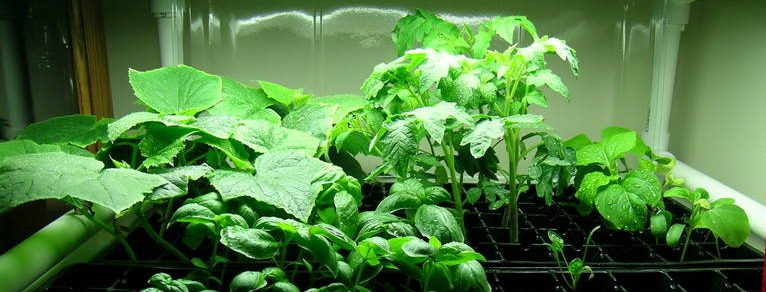My container garden project this spring would have gone a lot better except for two things. One, a weeklong period of hot sun with no rain really took a toll on the tomato plants, even though I set up a system to spray mist the foliage. Second, at some point, the critters started finding my plants-- I must have thrown out over a dozen affected tomatoes. Having my plants in a greenhouse would have-- or should have-- solved both of these problems. With the embarkation on my hydroponic system, I decided to construct a small greenhouse.
I found plans on the internet for a simple structure using PVC pipe to create a quonset hut-shaped "hoop house". Covered with 6 mil clear polyethylene film and strategically placed shade cloth, it should keep out critters, control temperature, and help retain moisture.
I decided on making it 9'x12' since I have a concrete slab extending my patio that I rarely use of roughly those dimensions. In that location, it will get good wind protection from the west and north, but it will still have to be anchored down to prevent any mishaps. With the addition of an exhaust fan and some venting, I should be able to provide an environment conducive to some vegetables, lettuces, and herbs.
I bolted together a frame out of treated 2x6s on-edge, nine by twelve feet, to fit on a section of my patio. 10 by 12 or even 12 by 12 would have worked using the same PVC and plastic sheeting. Using some mending plates, I made some L-shaped brackets to secure the frame to the slab.
The ribs are made from 3/4" schedule 40 PVC, 10 foot lengths. Using 3/4" crosses and tees, the ribs are joined together spaced 24" apart. The top crossbar is from pieces cut 22-3/8" (I think) to achieve the 24" spacing once assembled. I did not use cement, but, in retrospect, should have, as one end joint worked loose over time from minor shifting in the wind. A 10 ft. length of 1/2" electrical conduit inserted inside the top bar before the last end rib is installed aids rigidity. The ribs are secured at the bottom with heavy gauge pipe straps-- I think you need to buy 1" to fit 3/4" PVC-- on the inside of the 2x6 frame.
The cover is 6mil polyfilm sheeting from Home Depot. I have plenty left to re-do it whenever it becomes necessary-- a roll 20 feet wide by 100 feet long was around $60. (What's on there now still looks OK after nearly a year.) I made a dozen or so clamps from 1" PVC by cutting slices 1-1/2" in length and then removing a bit more than a quarter of their circumference, and sanding all sharp edges and points smooth. I applied the film on the ends first, wrapping from the inside, over the top of the end ribs, and making a short slit at the top center to fit around the top crossbar. Then a 13 by 20 foot piece went over the top, and both the end sheets and the top were secured by the same clamps at several points. Finally, the bottom of the sheeting was secured all around from the inside by folding it inward and screwing 2" treated lath into the top of the 2x6s with the poly sandwiched between. Additional items included an X-shaped brace on one end to add rigidity, and a screen door made of treated 1x2s on the other.
You can get by in the winter months using a cheap box fan for airflow, but in the summer an enclosed hoop house such as this will need some serious ventilation to keep the temperature in line. Shade cloth alone won't cut it. You might even consider making the ends out of screen instead of plastic.
